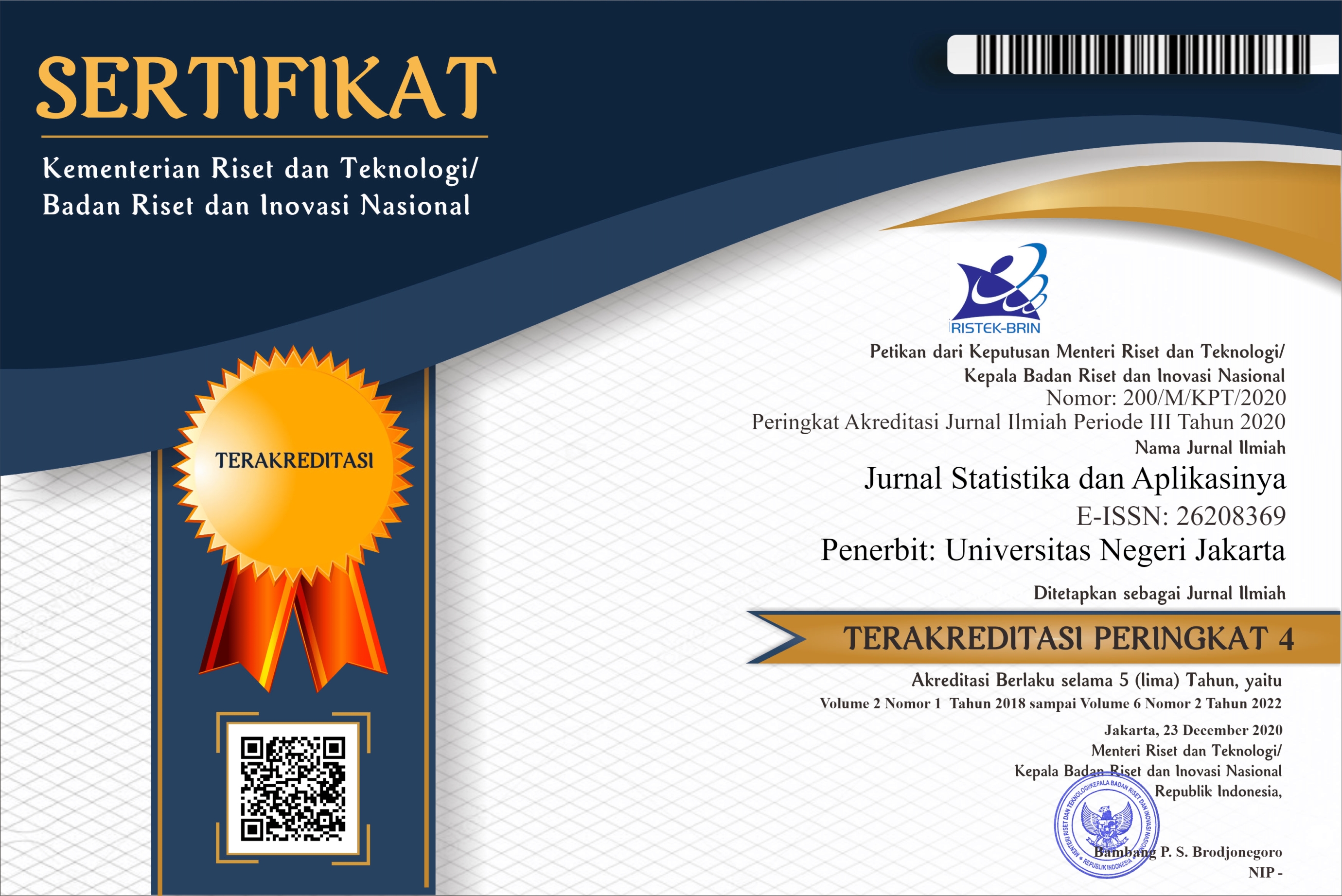Clustering Municipality of Dengue Hemorrhagic Fever Typologies in Central Java
DOI:
https://doi.org/10.21009/JSA.08108Keywords:
DHF, Clustering, Environmental HealthAbstract
Cases of dengue hemorrhagic fever (DHF) generally occur in areas with high temperatures. Central Java Province, Indonesia is one of the regions that has high temperatures, making it vulnerable to dengue cases. The study aimed at grouping DHF endemic areas in Central Java needs to be done to assist the government in determining policies to control or prevent DHF. The cluster analysis method used in this study is Average Linkage. The results showed that there were 3 clusters formed. Cluster A is a cluster with the characteristics of having the highest average percentage of households that have access to safe drinking water. Cluster B is the cluster with the highest average number of protected springs. While cluster C is dominant in 4 factors with the highest average, namely the percentage of households that behave in a clean and healthy life, the percentage of healthy homes, the number of Polindes (Village Maternity Hut), and the percentage of households that have access to proper sanitation. Clusters A and B are clean water type and Cluster C is a sanitation type, where clean water and sanitation are both indicators of environmental health. Therefore, environmental health is closely related to the presence of dengue fever in a community environment. The determination of three clusters was based on the chosen method and criteria. Other methods or criteria might suggest a different optimal number of clusters. The findings are specific to Central Java Province and may not be generalizable to other regions with different environmental and social contexts. In this case, it is necessary to pay attention to the community for environmental health in order to overcome or prevent the occurrence of DHF. where clean water and sanitation are both indicators of environmental health. Therefore, environmental health is closely related to the presence of dengue fever in a community environment.






